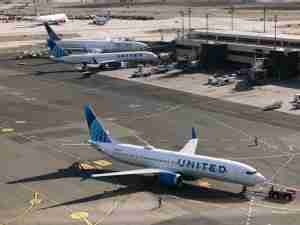Opening remarks, as prepared, of Committee on Transportation and Infrastructure Ranking Member Sam Graves (R-MO) and Subcommittee on Aviation Ranking Member Garret Graves (R-LA) from today’s hearing entitled, “Status of the Boeing 737 MAX”:
Thank you Chairman Larsen and Ranking Member Graves for holding this hearing.
I want to extend my condolences to the families and friends of the accident victims. Their loss is why it is important we understand what occurred and what is needed to get the 737 MAX safely back in the air.
Safety is the highest priority, and we should and do regularly examine our safety programs.
While we are early in the investigations, many appear to have already concluded that the FAA’s processes are to blame. Should the various investigations reveal problems with the certification of the 737 MAX, Congress can and should act. But any actions Congress or regulators consider must be based on facts, not a panicked desire to “do something.”
I reviewed the Lion Air and Ethiopian preliminary accident reports and I feel strongly about sharing my thoughts with this committee based on my experience and perspective as a pilot with an ATP.
First, with Lion Air, there were flight control problems reported by pilots flying the same aircraft on the three days preceding the accident flight. On the flight the day before the accident flight, the pilots experienced identical issues, yet flew more than an hour with the autopilot off and trimming the plane manually. Unfortunately, it does not appear that they fully reported the problems. Yet, based upon those reports, the aircraft was serviced and cleared for flight.
The preliminary accident report prepared by the Ethiopian authorities concludes that the pilots followed proper procedures, but there are several facts that contradict that conclusion.
First, the aircraft accelerated throughout the flight; the pilots never pulled back the throttles after setting them at full thrust for takeoff. The aircraft actually accelerated to between 450 and 500 knots – far beyond the maximum certified speed of 340 knots. That fundamental error appears to have had a domino effect on all the events that followed.
After an apparent faulty sensor caused the plane’s MCAS to angle the plane’s nose down, the pilots did follow the procedures by turning off the automated system and trying to manually trim the plane. However, they were simply going too fast to manually level the plane – imagine trying to open a car door at 100 mph.
The pilots – both in their 20s and with less than 160 total hours combined flying a 737 MAX – then reactivated the automated system. The plane went nose-down again, and the pilots were unable to recover. No operating procedures that I know of direct a pilot to reactivate a faulty system.
The Lion Air and Ethiopian pilots desperately tried to save their passengers, but the facts in the preliminary reports reveal pilot error as a factor in these tragically fatal accidents. To focus on a single possible cause fails to see the forest for the trees.
Boeing is developing an MCAS software fix, but we can never eliminate every risk or anticipate all scenarios, no matter how much technology is in the cockpit. Failures will occur.
The most important safety feature in any cockpit is a well-trained pilot. Regardless of what the investigations conclude, airlines must ensure their pilots are sufficiently trained and experienced to handle the aircraft. Pilots can master the cockpit’s technology, but they must be able to fall back on their training to fly the plane – not just fly a computer.
For me, the accident reports reaffirm my belief that pilots trained in the United States would have successfully handled the situation. The reports compound my concerns about quality training standards in other countries. That is why I asked the DOT Inspector General to look at international pilot training.
In the end, these facts are irrefutable: the U.S. aviation system is the world’s safest thanks to FAA’s leadership. And despite sensational reports claiming the agency’s international standing is in question, the FAA remains the gold standard for safety.
In the last decade in the United States, there have been nearly 7 billion passengers on 90 million flights, with only one fatality; this includes 57,000 flights of the 737 MAX. One life lost is one too many, but that is a remarkable safety record.
One reason our system is safe is the collaborative process between FAA, pilots, manufacturers, airlines, and mechanics. This decades-old structure has worked so well that last year, Congress overwhelmingly voted to uphold and improve the agency’s aircraft certification process.
I caution those who want to blame FAA’s process that jumping to conclusions only serves to erode confidence in the U.S. aviation system when the safety record speaks for itself. While we have preliminary information, we do not have the final reports, nor the benefit of the investigative work yet to be completed. What we do know does not justify abandoning FAA’s proven system that has made air travel the safest mode of transportation in history.









